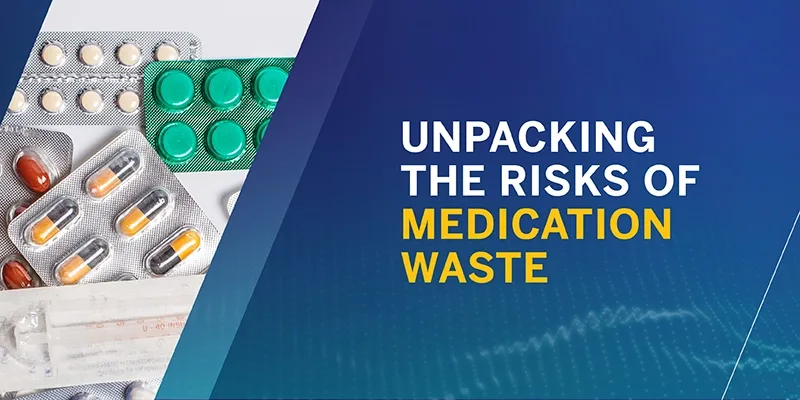
By Anthony Garcia, Vice President, Healthcare Sales:
Within the intricate ecosystem of hospital operations, few inefficiencies are as persistent—or as overlooked—as medication waste. Every year, billions of dollars’ worth of unused or expired pharmaceuticals are discarded across U.S. health systems. But this isn’t merely a matter of lost inventory. It’s a reflection of deeper systemic challenges that affect care readiness, regulatory compliance, and financial stewardship.
Medication waste is often treated as an unavoidable byproduct of healthcare complexity. In reality, it stems from a series of operational decisions—about forecasting, replenishment, storage, and accountability. Many hospitals still rely on reactive inventory practices: periodic checks, manual audits, and supply chains built around outdated consumption patterns. These methods contribute to excess stock, poor visibility into real-time usage, forecasting gaps at the department or tray level, delayed replenishment, and fragmented recall processes that strain compliance and safety efforts.
Rather than accepting this waste as the cost of doing business, hospital leaders should recognize it as a design flaw—one that can be corrected through data-driven systems, modernized workflows, and integrated technology. Some health systems are already embracing this shift, moving beyond temporary fixes toward a more strategic and sustainable approach to medication management.
For example, real-time inventory intelligence now allows hospitals to monitor availability, expiration, and utilization across units with greater precision. Automation tools reduce reliance on memory and manual tracking by enabling mobile scanning, digital logging, and proactive alerts—keeping inventory current and responsive. Embedded recall workflows help teams act quickly and precisely when issues arise, minimizing disruption. Perhaps most importantly, predictive analytics are guiding smarter procurement decisions based on actual patient demand and usage trends, preventing overstock before it starts.
Together, these changes represent more than operational improvement; they signal a cultural shift toward accountability, precision, and resource stewardship. Waste is no longer seen as an inevitable output of complexity, but as a solvable challenge requiring sustained attention and investment.
As financial pressures increase and regulatory demands intensify, medication waste should be viewed as a strategic vulnerability—one that touches patient safety, staff efficiency, and institutional resilience. Fortunately, the tools and frameworks to address it already exist. What remains is the leadership will to rethink legacy processes and design systems that reflect today’s clinical and operational realities.
In a healthcare landscape where every margin matters and every moment counts, eliminating medication waste is not just a fiscal opportunity—it is a strategic imperative. And it offers a rare chance to reinvest in the goals that matter most: care readiness, operational reliability, and responsible resource use.
